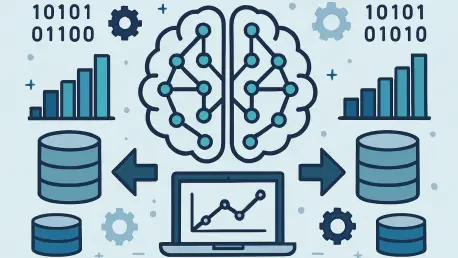In recent years, advancements in machine learning have transitioned from merely processing vast volumes of data to developing a nuanced understanding of its intrinsic characteristics. One groundbreaking development emerging is the innovative approach devised by researchers at MIT to handle datasets with symmetric properties. These properties often appear in various scientific domains like molecular chemistry, physics, and natural sciences, where symmetrical features can significantly impact machine learning outcomes. Understanding these properties ensures models correctly interpret datasets, preventing them from mistaking identical items for different ones, a mistake that compromises both the accuracy and efficiency of algorithms.
The Role of Symmetry in Machine Learning
Understanding Symmetrical Properties
Symmetrical properties in data refer to characteristics that remain consistent despite transformations such as rotations or reflections. When machine learning models recognize these characteristics, they process data with greater accuracy and require fewer data points to achieve robust predictions. This efficiency is crucial in fields like drug discovery, materials science, and climate modeling, where accurate predictions can lead to significant breakthroughs. In these areas, symmetrical data recognition can lead to streamlined processes, substantial cost savings, and expedited scientific advancements by minimizing redundancy and enhancing computational processes.
Despite the visible advantages, many existing machine learning models struggle to effectively harness these symmetrical properties. Historically, models have relied heavily on methods like data augmentation, where datasets are artificially expanded by rotating and reflecting data points to ensure the model accurately generalizes new data. This method, though useful, is computationally expensive and not always feasible on a large scale. Researchers have been driven to explore new avenues for embedding symmetry directly into model architecture, leading to pioneering developments like graph neural networks (GNNs). While GNNs have been successful, their complexity and the mysterious underpinnings of how they process symmetrical data catalyzed further research at MIT.
Efficiency and Computational Trade-offs
The MIT research delved into a fundamental issue plaguing machine learning: the delicate balance between statistical efficiency and computational cost. Developing a framework that respects symmetry, reduces computational demands, and maintains data integrity was a primary objective. Researchers aimed for an innovative approach that adheres to the inherent symmetrical properties of data while optimizing the overall machine learning process. The team’s inspiration stemmed from combining algebraic concepts with elements of geometry, creating a new model that acknowledges and processes these symmetric characteristics simply and effectively.
The newly-developed algorithm has markedly revolutionized the relationship between data quantity and computational effort. By significantly reducing the number of data samples necessary for training, the algorithm not only ensures accuracy but also increases adaptability to varying contexts. This paves the way for innovative neural network architectures capable of delivering greater precision and resource efficiency, far surpassing existing models. The versatility and effectiveness of this novel algorithm underscore its ability to reshape the foundation of machine learning processes involving symmetric properties.
Implementation and Potential Impact
Innovative Algorithm and Neural Networks
Decoding machine learning’s challenge with symmetrical data, MIT researchers crafted an algorithm that fuses algebra with geometry, prominently focusing on optimizing symmetry within data structures. This cutting-edge solution heralds a transformative shift in how symmetry is handled, setting the stage for next-gen neural networks that maximize data proficiency and resource efficiency. A standout feature of this algorithm is its demonstration of requiring a much smaller dataset for training, reinforcing the model’s capability to apply with resilience to unfamiliar contexts and challenging scenarios.
With its unprecedented accuracy and efficiency, this algorithm transforms not only traditional data processing but also contributes vital breakthroughs in applications such as drug discovery, material science innovations, and complex modeling tasks. The algorithm’s impact extends beyond academia and into industries, where its implementation can significantly cut costs, improve prediction accuracy, and enable new research methodologies. Moreover, the insights gained from understanding the operational mechanics behind algorithms like graph neural networks further support the goal of designing models that are not only high-performing but also transparent and interpretable.
Broader Implications and Research Significance
The broader implications of MIT’s innovative algorithm underscore a significant achievement in the machine learning landscape. By facilitating an expanded understanding of symmetry within data, this breakthrough serves as a precursor to more intuitive and efficient neural network models that can effectively address and solve real-world challenges. The development inherently promotes more reliable predictions and scalable solutions, marking a transformative point in the evolution of machine learning applications. Furthermore, it exemplifies a harmonized integration of computational efficiency and empirical accuracy, a balance necessary for technological advancements in predictive modeling.
The research, supported by esteemed institutions like the National Research Foundation of Singapore and the U.S. National Science Foundation, illustrates the value and potential impact recognized by global leaders and entities dedicated to advancing computational sciences. This robust backing not only endorses the credibility and importance of the study but also positions it at the forefront of machine learning innovation. As computational challenges continue to evolve, the application and development of concepts rooted in symmetric data efficiency may serve as a guiding beacon for future explorations in the field.
Future of Symmetric Data in Machine Learning
Evolving Algorithms and Neural Networks
The groundbreaking work at MIT sets a promising trajectory for further advancements in machine learning models capable of processing symmetric data. As understanding and interpreting symmetrical properties become essential to machine learning efficiency, this algorithm emerges as a foundational tool for constructing more sophisticated neural network architectures. These architectures prioritize symmetry and refine their learning mechanisms, leading to improved outcomes across diverse applications, from scientific research to complex engineering tasks. Aligning algorithm efficiency with data symmetry equips researchers and developers with strategies to alleviate computational burdens while maintaining superior performance.
The potential for these models to evolve further, integrating additional advancements in algebraic and geometric principles, provides a foundation for even more revolutionary changes in the scope of machine learning. By building on this research, subsequent models may offer unprecedented adaptability and real-world applicability, underlining the perpetual innovation within the field.
Impacts on Scientific and Technological Progress
Symmetry-centric machine learning models hold transformative potential for numerous scientific and technological realms, providing intuitive solutions to multifaceted challenges. By grounding advancements in mathematical and computational insights, researchers can explore unseen territories of predictive modeling and develop algorithms that resonate with the intrinsic properties of data. The capacity to adapt solutions and methodologies in response to shifting data paradigms not only elevates the standard of machine learning but also opens doors to innovative uses in sectors historically unassociated with technology-driven solutions.
These pioneering steps forward, ignited by the interplay of algebra and geometry within machine learning development, present a beacon of progress and enlightenment for both academic and industrial leaders. By capitalizing on these transformative insights, the field continues to spearhead a future where efficient and effective data processing translates into meaningful advancements and groundbreaking original discoveries.
Conclusion: A New Era of Machine Learning Efficiency
In the past few years, significant strides in machine learning have transitioned from simply managing massive data volumes to fostering an in-depth understanding of its underlying traits. A particularly revolutionary advancement currently making headway is the novel method developed by MIT researchers to deal with datasets characterized by symmetric properties. Such properties are frequently present in various scientific fields, including molecular chemistry, physics, and the broader natural sciences. These symmetrical features are crucial, as they play a significant role in influencing machine learning results. Recognizing and understanding these properties allows models to interpret datasets accurately, preventing them from erroneously identifying identical items as differing ones. Such errors can severely undermine both the precision and effectiveness of machine learning algorithms. The MIT approach is critical for enhancing how models perceive symmetric properties, ensuring that these algorithms generate reliable and efficient outcomes in scientific research and beyond.









